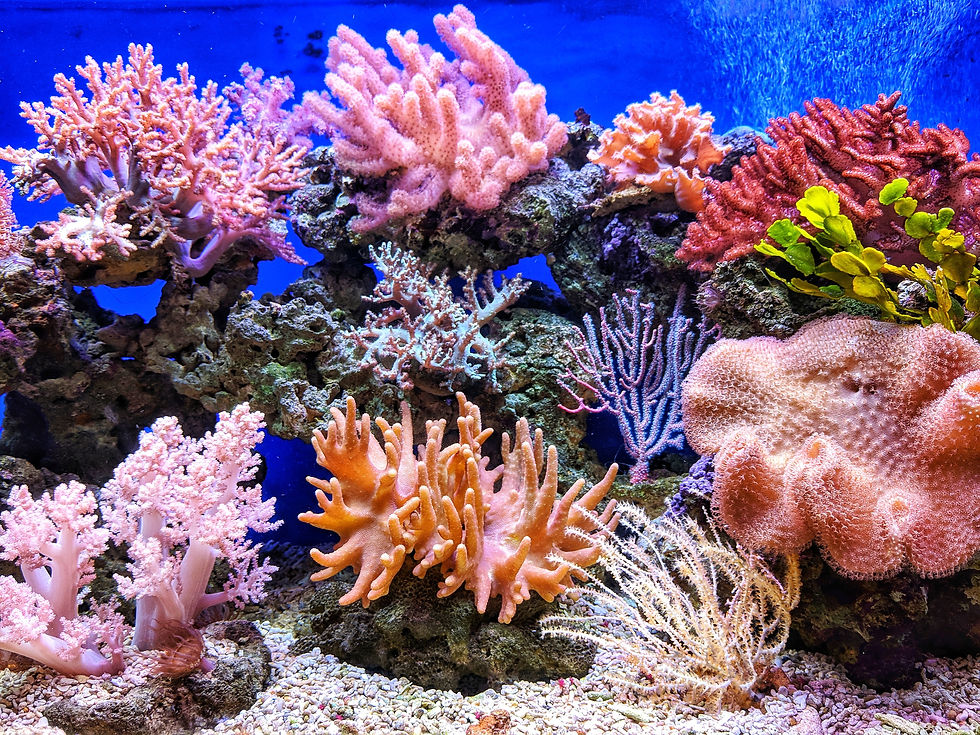How Microfibres are Making Their Way into Our Oceans
- Rachel Alexander

- Jun 5, 2021
- 3 min read
Updated: Aug 16, 2021
One invisible polluter in our oceans are microfibres. By doing your simple chores you’re contributing to the build up of them into the ocean.
Around 50% of our clothing is made of microfibres. And when we wash our clothes they are released from the items’ fabric, into the water system and eventually end up in the ocean.
What are they?
These are tiny synthetic fibres made from plastic. They are less than 5mm in length and thinner than human hair. When we wash our clothes, these microfibres are released into the ocean.
The fashion industry is responsible for 35% of microplastic pollution. These microplastics are caused by the use of synthetic materials in our clothing. The most common examples include polyester, nylon, and acrylic.
Why are they are a problem?
Before reaching our oceans, water goes through a treatment system. Typically, this will remove debris from the water ensuring it is cleaner and then releases it into the ocean. However, the tiny size of the microplastics is again a huge problem as they can often escape through the filtration system and become water pollutants.
These microfibres are hydrophobic. This means they absorb toxic chemicals released into the oceans years ago, like pesticides which are now banned. These tiny plastics can also absorb chemicals before they are even washed by us. Such as toxins from detergents and fire-proofing materials.
One load of washing could release up to 20 million microfibres. Their small size means that they can be ingested by marine wildlife and destroy the ocean’s ecosystem – small sea creatures like plankton mistake these for food and can eat them. The microfibres then pass up the food chain when larger animals eat the plankton and can even make their way into our own food.
The toxic chemicals released by them can even be found in some seafood such as mussels. In a study, 25% of fish directly sold for human consumption were found to be polluted, and the overwhelming majority of this pollution was microfibres. These chemicals when ingested can harm our kidneys, liver, and central nervous system.
What can we do to help?
By making small changes to how you wash your clothes you can greatly reduce the amount of plastic fibres you are releasing into the environment. It can be as simple as washing your clothes less frequently and buying less clothes.
You can use less aggressive methods to washing your clothes. This can include washing your clothes at a lower temperature or air drying rather than tumble drying. But if tumble drying is necessary for you then reducing your spin speed can still help.
You can also try to always wash a full load as this will cause less friction between items and less micro-plastics will be released. Some washing machine have a filter which will help prevent some from escaping but it’s not the only solution.
One effective way of helping reduce water pollution from microplastics is to stop contributing to fast fashion. Fast fashion doesn’t just pollute in landfills, the cheap materials used to manufacture items of clothing means that there are more new items with a high synthetic content.
Avoid buying items containing high percentages of polyester, nylon, and acrylic. Your clothes are more likely to shed microfibres in the first few washes, so try opt for buying less or shopping second hand.
The fashion industry needs to step up and reduce the amount of microplastics in our oceans. By manufacturing items from higher quality, natural materials this ensures that items stay out of landfill for longer and can be added back into circulation when one wearer no longer wants it. To read more on the fashion industry’s response to the global crisis click here.
Product suggestions
You can also buy items to put your clothes into when washing which will catch the microfibres and prevent them from being released. One option is the Guppy Friend which is a bag you place your washing into when in the washing machine and it catches 99% of microfibres. This brand aims to spread awareness of the dangers of microplastics and educate people on helping the planet.
Another product is the Cora Ball. This is a small item that’s designed to catch the microfibres and make them into visible fuzz so you can remove them by hand and prevent them from getting into our oceans.



Comments